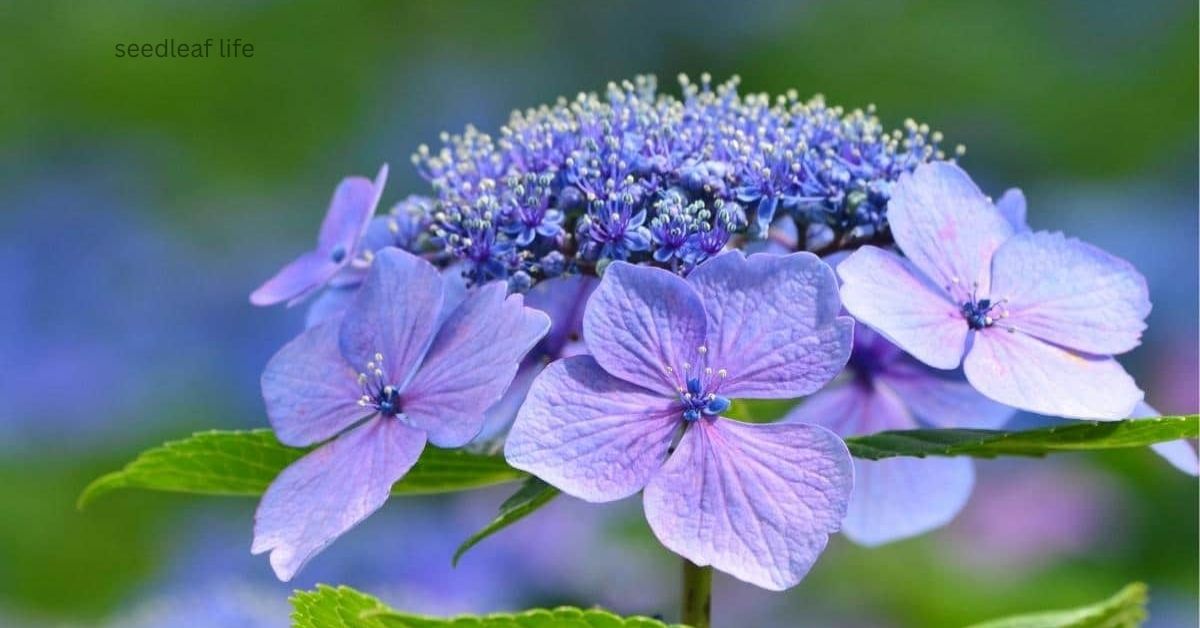If you think all hydrangeas are created equal, think again! Lace Cap Hydrangeas stand out from their mophead cousins with their intricate flower formations and graceful appearance, offering a refreshing twist to traditional gardening aesthetics. In this article, we’ll delve into what sets Lace Cap Hydrangeas apart, highlighting their unique features and care requirements. You’ll discover how to incorporate these charming blooms into your garden for a touch of sophistication and elegance.
Origin and Background
- Lace Cap Hydrangea, known scientifically as “Hydrangea macrophylla“, hails from the verdant landscapes of Japan, where it thrives in the temperate climate and rich, acidic soils.
- This stunning plant is characterized by its unique flower structure, featuring a central cluster of tiny fertile blooms surrounded by larger, showy sterile flowers.
- The lace cap variety stands out for its intricate beauty and delicate appearance.
- As the world became more interconnected, Lace Cap Hydrangea made its way beyond Japan’s borders.
- Gardeners and plant enthusiasts in Europe and North America discovered this floral gem in the 19th century, captivated by its artistic form and color variations.
- Today, Lace Cap Hydrangea is celebrated not only for its visual appeal but also for its resilience, offering gardeners an enduring source of joy and inspiration.
- Gardeners are particularly enamored with Lace Cap Hydrangea for its ability to create stunning focal points in any landscape.
- With blooms that transition from soft pastels to vibrant hues throughout the seasons, they add depth and texture to gardens.
- Moreover, the lace cap variety attracts pollinators like bees and butterflies, fostering biodiversity.
- Whether used as a standalone specimen or in mixed borders, this exquisite hydrangea invites appreciation and creativity, enriching gardens with its graceful presence and enchanting charm.
How to Grow Lace Cap Hydrangea
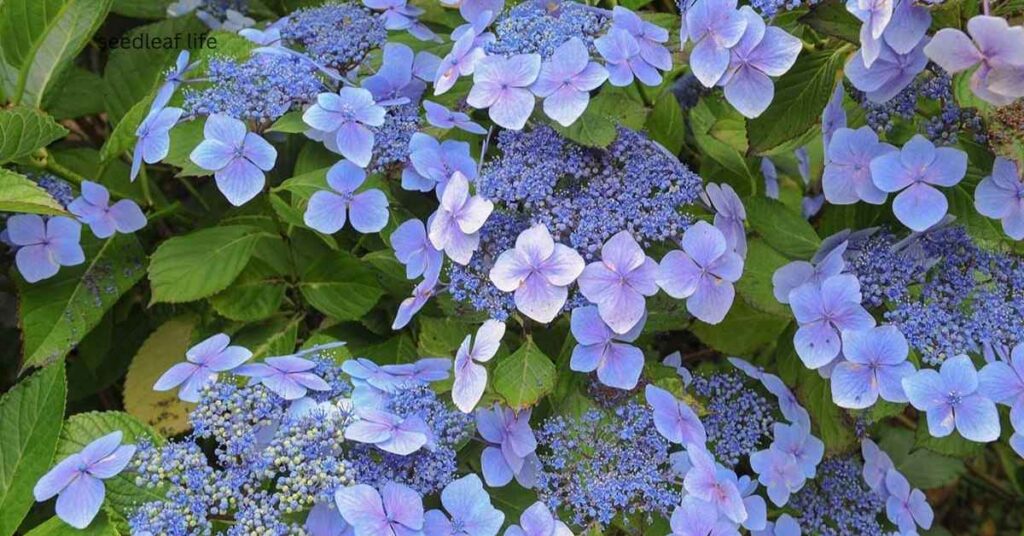
Growing Lace Cap Hydrangeas is a joy—they’re not just beautiful, but also full of personality with their changing flower colors. With the right care, you can enjoy these blooms year after year.
Here’s a simple guide to help you get started:
Soil Requirements
- Best soil: Well-drained, loamy soil with organic matter.
- Ideal pH: 5.5–6.5 (acidic – blue blooms, alkaline – pink, neutral – purple).
- Test your soil’s pH before planting to choose your bloom color.
Sunlight & Location
- Best light: Morning sun – afternoon shade (protects from harsh heat).
- Perfect spots: Near taller trees/shrubs, along garden paths, or by patios for beauty and protection.
Watering Needs
- Keep soil evenly moist but never waterlogged.
- Water deeply once a week during dry spells.
- Use mulch to retain moisture and regulate soil temperature.
Best Planting Time
- Spring or fall planting gives the best results.
- Planting tip: Dig a hole twice as wide as the root ball and add compost for strong roots.
Pruning & Care
- Best time: Late winter or early spring.
- Method: Remove dead/weak stems, prune about one-third of old stems for fresh growth.
- Goal: Encourage new growth , more blooms without damaging next year’s flowers.
Benefits of Growing Lace Cap Hydrangea
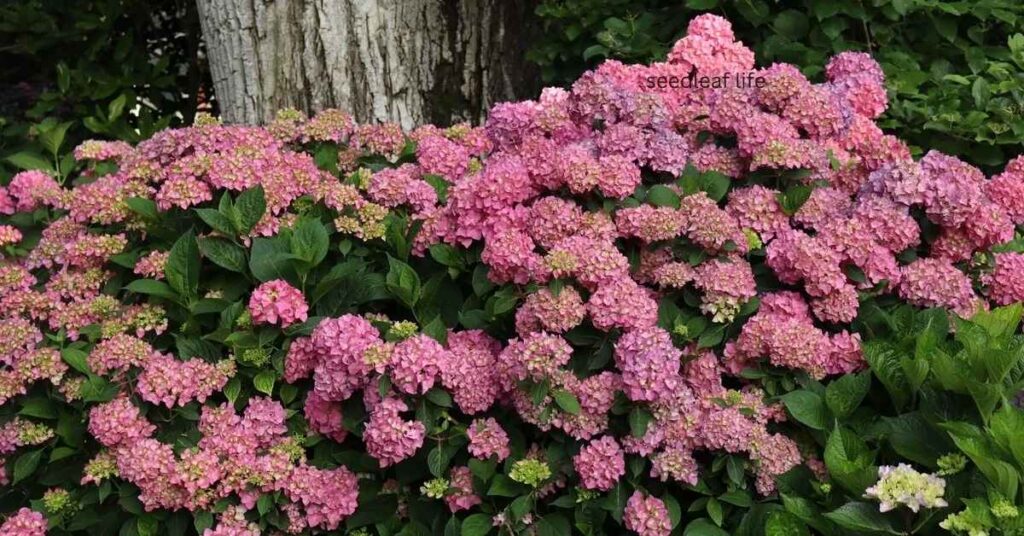
Lace cap hydrangeas are like the elegant jewels of the garden, offering a unique aesthetic that sets them apart from traditional mophead varieties. Their intricate flower clusters, resembling delicate lace, create a soft and romantic ambiance, making them a stunning focal point in any landscape.
With shades ranging from deep blues to vibrant pinks, these beauties can easily complement any color scheme, adding depth and character to your garden beds or containers. Imagine sipping your morning coffee while admiring the gentle sway of their blooms in the breeze — a truly serene experience!
But the benefits of growing lace cap hydrangeas go far beyond looks:
- Aesthetic beauty for gardens – Their lace-like blooms bring elegance and charm, instantly elevating your outdoor space.
- Attracts butterflies and pollinators – These hydrangeas are a magnet for beneficial insects, enriching your garden’s ecosystem and supporting pollination.
- Low-maintenance variety – Perfect for gardeners who want stunning flowers without high-effort care.
- Versatile for landscaping and containers – Whether in borders, beds, or decorative pots, they adapt beautifully to any setting.
- Long blooming season – Enjoy their delicate flowers from summer all the way into fall, extending color and life in your garden.
Lace cap hydrangeas aren’t just plants, they’re companions that bring beauty, wildlife, and ease to your gardening journey. With their versatility and charm, they might just become your new favorite garden showstopper!
Popular Varieties of Lace Cap Hydrangea
One of the most delightful things about lace cap hydrangeas is the variety of colors and styles they bring to the garden. Each type has its own personality, making it easy to find one that matches your garden’s style and your personal taste. Here are some of the most popular varieties:
- Blue Wave Hydrangea
A true showstopper with vibrant blue blooms that shimmer in the sunlight. This variety thrives in slightly acidic soil, perfect for creating a serene, coastal vibe. Its elegant lace cap form, with dainty florets surrounding a central cluster, makes it a favorite among gardeners.
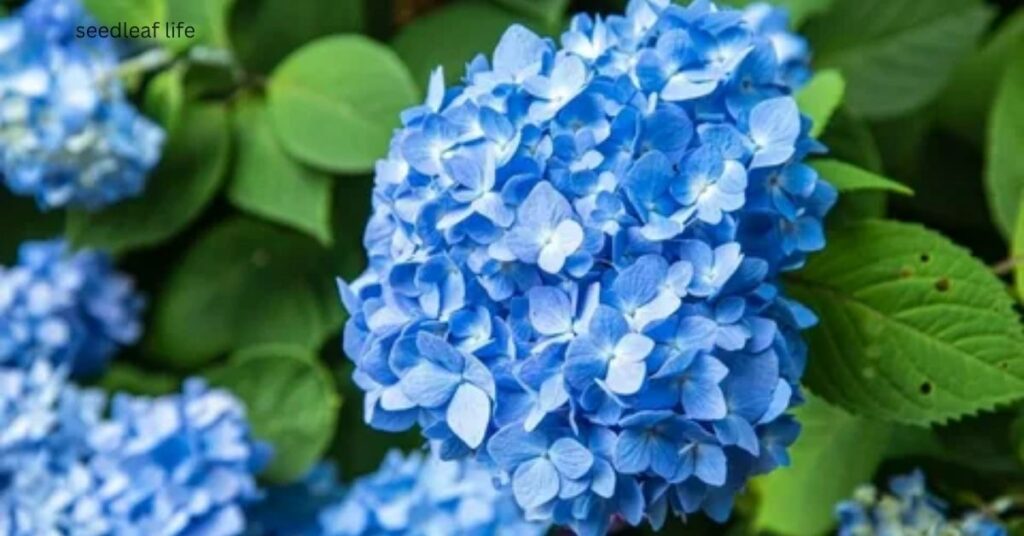
- Lanarth White Hydrangea
- Known for its pristine white flowers that gradually take on a soft blush-pink hue as they mature. This variety is particularly resilient, handling a range of conditions while still looking stunning year after year.
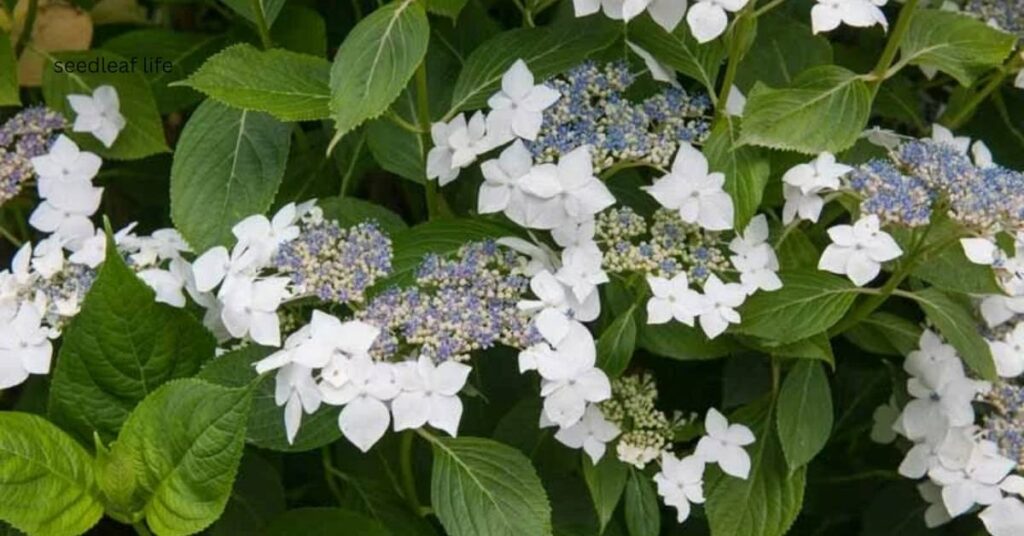
- Twist-n-Shout Hydrangea
A cheerful option with charming, upward-facing flowers that seem to dance in the breeze. Its compact size makes it ideal for smaller gardens, borders, or even decorative containers.
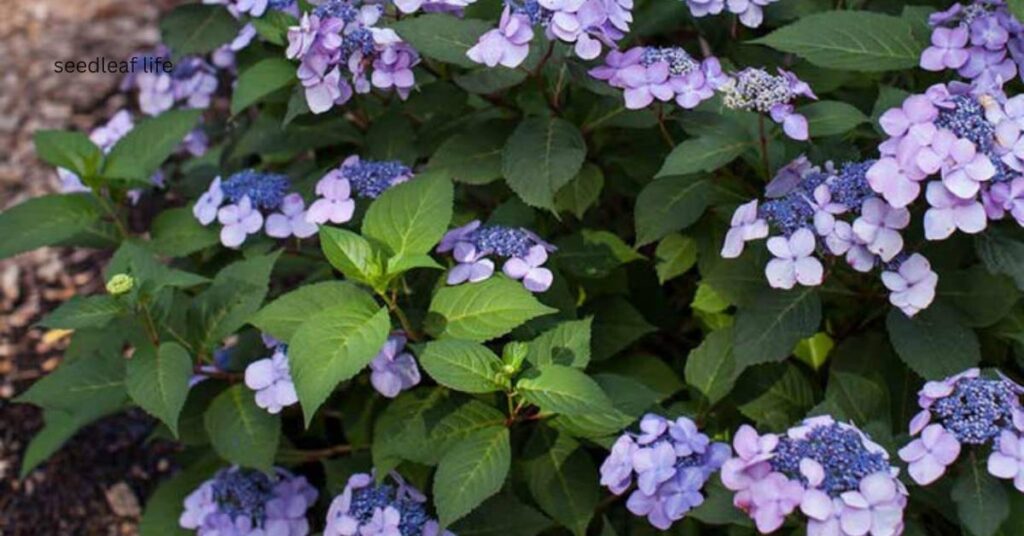
- Mariesii Perfecta Hydrangea
Beloved for its classic lace cap form and striking blooms, Mariesii Perfecta brings timeless elegance to the landscape. Its bold presence makes it a favorite among both new and seasoned gardeners.
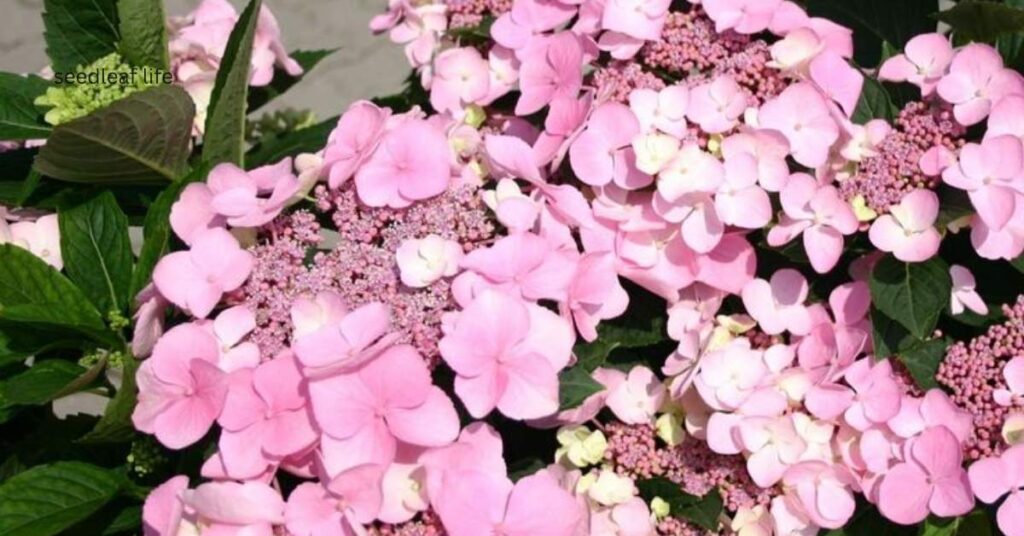
White Lace Cap Hydrangea
A refined beauty that adds brightness and contrast to any garden. Its delicate flower clusters stand out against lush green foliage, offering a clean, sophisticated look.
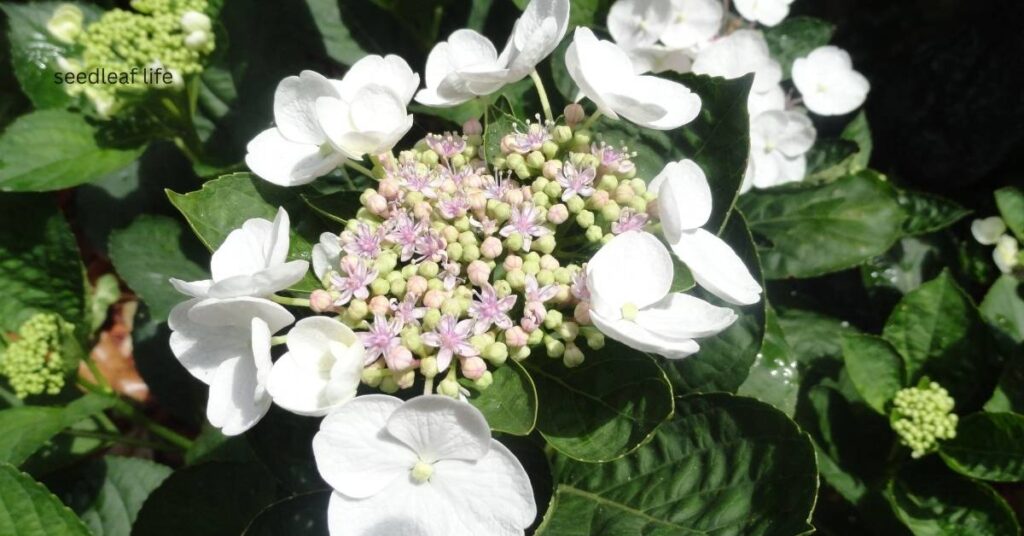
Whether you’re drawn to bold blues, elegant whites, or playful pinks, these lace cap hydrangea varieties offer something truly special for every garden enthusiast.
| Variety | Bloom Color | Plant Size | Special Qualities | Best Use |
| Blue Wave | Vibrant blue (in acidic soil) | Medium–Large | Creates a coastal vibe, color changes with pH | Garden beds, focal points |
| Lanarth White | White – Soft pink | Medium | Resilient, color changes as flowers mature | Mixed borders, garden accents |
| Twist-n-Shout | Pink or blue (pH dependent) | Compact/Small | Upward-facing blooms, long blooming season | Containers, small gardens |
| Mariesii Perfecta | Soft blue or pink | Medium–Large | Classic lace cap; reliable performer | Large borders, traditional beds |
| White Lace Cap | Pure white | Medium | Elegant and bright, adds contrast to green foliage | Shady spots, containers, borders |
Unique Features of Lace Cap Hydrangea
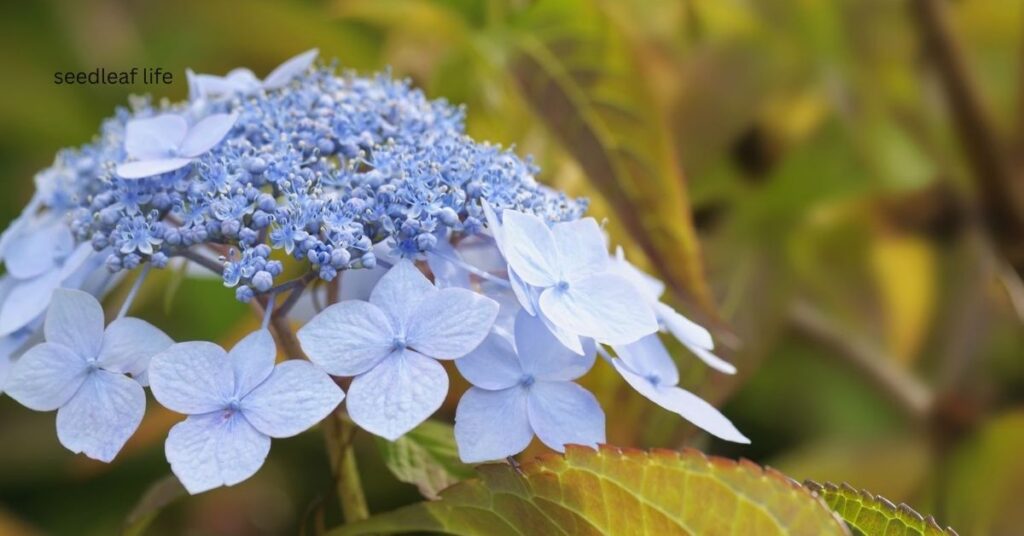
Lace-like bloom design:
- Central cluster of tiny flowers surrounded by larger, petal-like florets.
- Creates a delicate, doily-like appearance that adds texture and elegance to gardens.
- Perfect for enhancing floral arrangements with an artistic flair.
Ability to change colors naturally
- Soil pH affects bloom color:
- Acidic soil – Blue flowers
- Neutral/alkaline soil – Pink flowers
- In-between – Purple hues
- Offers gardeners a chance to personalize their landscapes with a changing color palette.
Medium shrub size (3–6 fit)
- Ideal for a variety of garden settings.
- Works beautifully as a standalone specimen or in mixed borders.
- Easy to fit into both small and large gardens.
Great for cut flowers & arrangements
- Sturdy stems make them excellent for cutting.
- Long-lasting blooms that elevate indoor bouquets and centerpieces.
Final Thoughts
In conclusion, Lace Cap Hydrangea is truly a gem that every garden should embrace. Its unique blooms and vibrant colors not only enhance the aesthetic appeal of your outdoor space but also attract pollinators, making it a friend to nature. With minimal care required, this plant is perfect for both seasoned gardeners and those just starting out. Imagine stepping into your garden and being greeted by the stunning display of these charming flowers, season after season. So why wait? Add Lace Cap Hydrangea to your garden today and enjoy its beauty for years to come!

